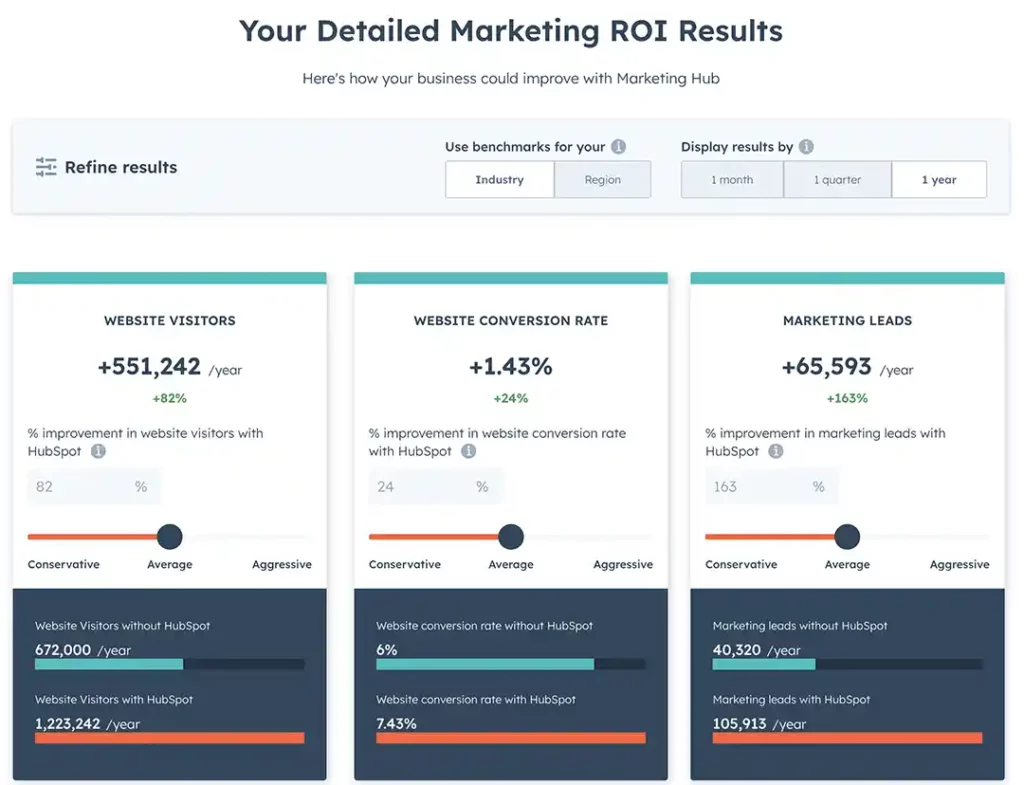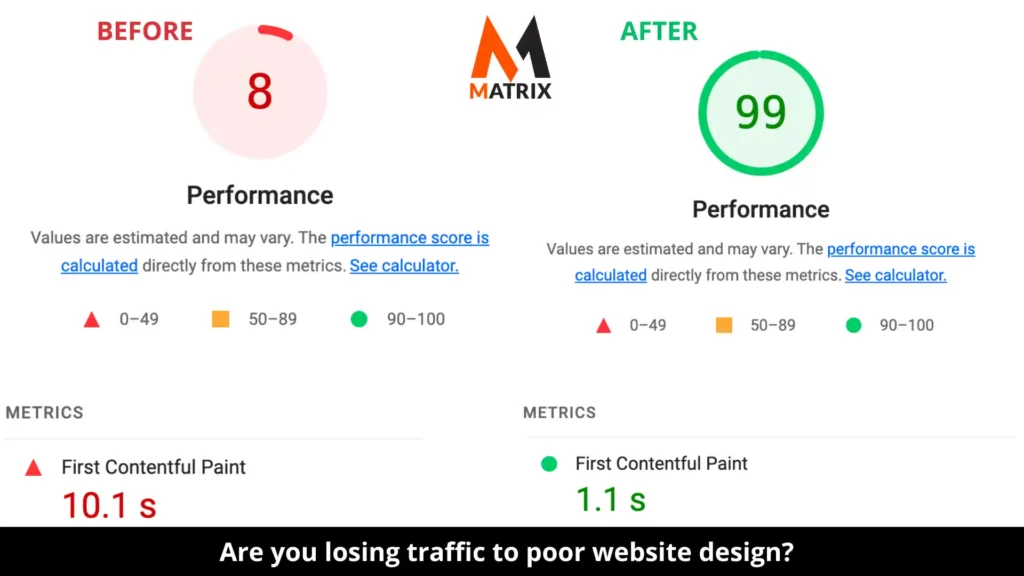Marketing and sales alignment are critical for the success of any business.
Your marketing and sales alignment strategy is potentially the largest opportunity for improving business performance today.
What if you could close more sales, reduce the sales cycle, reduce the customer acquisition cost, and improve employee retention rates? Wouldn’t you? We show you examples of sales alignment, sales and marketing alignment statistics, and the benefits of sales and marketing alignment.
We will also touch on sales and marketing alignment Hubspot and sales alignment definition.
I used to have a large tradeshow budget, and every year, the marketing and sales team would ask me if we could do booths for this and that show. Have you been to one? Did we attend New York City, Toyoko, London, and San Francisco tradeshows?
We set up a meeting and ran marketing programs to attract more traffic to the booth. It doesn’t matter if you use a fishbowl, electronic scanner, or write-down leads.
These leads must be validated for need, fit, budget, timing, authority, and timing. In the old days, we ousted-handed all the leads to sales, and they were based on them.
Out of 1,000 leads, 50% can be removed, but 500 is still much pre-qualification work. You see the inefficiency and effectiveness. These tradeshows cost a large amount of money and resources.
The new marketing and sales environment has only added to the issues marketing and sales managers face today. Despite good intentions, the relationship has never been an easy one. AI Blog Post Generation GPT Agent: Unleash the Future of Content Creation
Orchestrate interactions that provide specific forms of help across the full customer journey autonomously. With three sets: New Neldentifyeds, Aid Self-Learning, and Foster Connection. Learn More.
On a good day, they don’t get along, reflecting misalignment. Marketing doesn’t know the difference between good and bad leads, and only if the sales team would follow up on the leads we work so hard to provide would they have more sales.
I’m bad days. It alters and harms business because of the lack of cooperation. When things go wrong, each blames the other.
Because of the sales organization’s power and role in driving revenue, marketing has been the department that loses these battles, but not without a black eye or two from the sales team.

Sales and marketing teams
The point is that in most companies, the structure of the sales and marketing teams is not set up for success, and for example, as specified above, everybody loses. It’s a lose-lose situation.
Every business that avoided the splits has done so because marketing and sales have stepped outside the traditional lines.
Those traditional boxes have been that marketing takes the longer view without producing in the here and now, has been accused of being unable to see past tomorrow morning. There are some truths and much exaggeration in both the sales and marketing teams’ perceptions.
The good news is that marketing and sales are positive, synergistic, and interdependent. If either team cannot agree and support the goals of the other, the entire business suffers. This is why, in the last decade, so many companies have drastically changed their business models toward digital with digital transformation. Sales and marketing alignment is more important than ever before.
Different Roles of the Sales and Marketing Teams
Marketing and sales fill very different roles. Marketing managers need a double vision.
We must interpret the present while simultaneously predicting the future. Marketers with only one vision- short-term put-out-the-fires tactics or long-term planning- serve their business poorly.
Ignoring values like branding and public relations can be very harmful when focusing on short-term lead requirements.
In contrast, most sales activities focus on the near term, and we would not want it any other way. Someone has to bring home the bacon and new revenue contribution and feed the business so it can grow.
Diverting sales attention from short-term revenue can be a costly mistake. Your sales reps sacrifice commissions due to the marketing team’s longer-term view. No matter how important it is to the company, you might find yourself unemployed.
Marketing now owns the e-commerce revenue channel, which compounds the typical conflict between the two organizations. Salespeople are concerned and believe prospects will return to the old business ways and are just kidding themselves.
The customer self-service model is too lucrative for sellers and too convenient for buyers for this to change; however, success in the new e-business model requires a different way of thinking about relationships between sales and marketing.
They can complement each other and play the same sandbox productively. Sales and marketing integration show great promise.
Many companies are frustrated because their sales reps are more loyal to customers, even at the expense of their own business. However, this is understandable because salespeople and sales reps now change companies, so they want to ensure they sell their existing customers something new when they switch jobs.
But perhaps the most crucial reason sales reps are more loyal to customers is that in the age of disintermediation, an inbound marketing method demands that they become strong customer advocates instead of just pitching existing value propositions.
The ROI of Aligning Sales and Marketing Functions

Your company can optimize its marketing and sales process through marketing and sales alignment. And with a highly tuned revenue model, you will simultaneously reduce your costs while increasing sales.
- According to the Aberdeen Group, sales and marketing alignment can lead to a 32% increase in revenue growth.
- Sales and marketing alignment can lead to a 208% growth in marketing revenue (Wheelhouse Advisors).
- Sales and marketing alignment can lead to 38% higher sales win rates (MarketingProfs).
Consequences of Poor Sales and Marketing Alignment
Companies that follow the status quo with the existing sales model will face lost sales and disenchanted sales and marketing teams.
Using expensive field sales resources instead of the new sales and marketing automation tools to service customers will make you strong. The cost of field sales will continue to rise; such companies will lose revenue to competitors good at conducting e-business.
It will widen if you don’t bridge the gap now. Your focus will have to be on sales efficiency instead of sales effectiveness. At least two terms sound delay. They are very different: sales efficiency refers to improving existing processes (doing things right), while sales effectiveness refers to changing processes (doing the right things).
Let me give you an example. Efficiency can make it possible for sales reps to make more sales calls, while effectiveness makes their sales calls more productive. You are receiving a much higher return on investment by focusing on effectiveness.
If the chief marketing officers fail to bridge the gap and embrace new e-business models, they will find it harder to prove the value of their marketing campaigns. How to Choose the Right AI Digital Marketing Agency: A Comprehensive Guide for Marketing Managers

If it involves a field salesforce, the real customer of marketing is the sales department, not the end-user of the product or services. I will point out it’s vital to focus on customer requirements.
If your real customer doesn’t appreciate your efforts and understand your unique value proposition, all your excellent work will be for nothing.
Be careful, even if your organization is very successful now because success can lead to terrible habits. I call this the Aren’t We Special Syndrome, or it’s different here. You feel you can do no wrong when revenue and profits are high.
Marketing and sales can do what they perceive as right because overall revenue goals are met, and everyone is happy.
What if happiness doesn’t last if you have underlying problems with your sales model or your competitors are much further along in their online marketing strategies?

How much better could you be if you had a better marketing and sales alignment strategy for your company?
Today’s complex buying cycle introduces new challenges for marketing and sales alike. However, many problems can be resolved when sales and marketing align.
- Problem 1: The sales team isn’t doing anything with the leads I’m sending. Sales teams ignore up to 80% of marketing leads instead of spending half their time on unproductive prospecting. Since sales have prospects to recycle, they’ll spend their time focused on older leads if marketing isn’t providing another option. If sales and marketing take the time to align on goals, lead definition, and handoff process, both teams will spend their time more on promising leads.
- Problem 2: I must align my marketing strategy with our sales strategy. Sales and marketing alignment is vital for both organizational success and boosting morale. To sync up, sales and marketing teams should schedule regular meetings to keep track of shared goals and communicate about workflow, obstacles, and wins. Ensuring both teams have a voice when setting strategies and planning content will be the most impactful at each stage in the buying process.
- Problem 3: I need to simplify my workflows. Sales and marketing alignment unifies leadership, combines shared goals and targeted personas, and can streamline workflows by sharing tools. Instead of marketing logging into one system and sales into another, both teams can use the same dashboards and tools, including customer engagement platforms.
- Problem 4: I must increase revenue and show a clear marketing ROI. It is challenging to display the actual value of your marketing program without a direct response or purchase to measure. This is true for B2B marketers focused on lead generation programs with long, complex sales cycles. To show an actual marketing ROI, you must be able to track and measure impact in an integrated way across all sales and marketing systems.
- Problem 5: My sales team relies on me to help them shorten the sales cycle and go to market faster with new products. The evolution of the B2B buying process has resulted in a more complex buying cycle and a massive shift in customer relationships. Buyers are choosing to delay interactions with sales and ignore traditional tactics such as outbound phone calls and emails. To meet customers where they are, sales and marketing professionals must work together to shorten the intricate new type of sales cycle. This includes syncing segmentation, targeting, content development, contact strategy, nurturing, engagement, closing, and customer support.
Getting your marketing and sales organizations in alignment won’t be an easy task, but it can be done if you use the following sales and marketing alignment strategies.
Planning, Implementing, and Optimizing Your Sales and Marketing Alignment Strategy
Sales and marketing alignment takes planning. Once you get on the right plan and get on track, you will be on your way to long-term success.
- Step 1: Define common terms. The first step in achieving sales and marketing alignment is for both teams to agree on defining common terms. It sounds simple, but it’s rare across revenue-producing teams. According to CSO Insights, only 44% of companies have decided on the definition of a qualified lead between sales and marketing.
- Step 2: Define the goals, objectives, and strategy together. Next, sales and marketing must clarify three keys: lead scoring, lead generation metrics, and service level agreements (SLAs).
- Marketing Funnel and Sales Pipeline: Your marketing funnel metrics show you how many leads you need in your sales pipeline to meet your revenue goals. The marketing funnel calculator is pretty simple math. It’s what goes into it that will take some data collection. The marketing funnel is segmented into marketing funnel stages. The marketing team will develop marketing funnel content for each of these stages. The aim is to move your marketing leads to marketing to the sales pipeline.
- Lead scoring: Lead scoring is a method for ranking leads to determine their sales readiness. Leads are scored based on their interest in your business, their current position in the buying cycle, and their fit regarding your business. Lead scoring is essential to strengthening your revenue cycle, but it is only effective if sales and marketing come together to define the scorecard.
- Lead generation metrics: A marketing qualified lead (MQL) is a prospect the marketing team has worked with and is considered the right potential buyer. A sales accepted lead (SAL) is a lead that the sales team acknowledges and is committed to acting upon, and a sales qualified lead (SQL) is a prospect that the sales team believes is almost ready to buy. When both teams come together to outline what qualifies a lead as an MQL, SAL, or SQL, both sales and marketing teams are ready for greater efficiency.
- Service level agreements (SLAs): Service level agreements must be created for each phase of the revenue cycle. As these systems become automated, everyone performs at a higher level. Getting these systems in place also provides documentation so marketing can show how someone became an MQL, and sales have a record of their contact with that person.
- Step 3: Replace the marketing funnel and sales pipeline with a revenue cycle. The traditional sales pipeline modeled a process whereby a broad audience was sorted into leads, prospects, and clients. Today this simple strategy keeps marketing in one silo and sales in another, in a market where they need each other to deliver the personalized attention that prospects expect.
- Step 4: Structure your revenue team (review your demand waterfall)
- Marketing roles: Demand generation lead, product marketer, content marketer
- Sales role: Sales representatives sell products, goods, and services to B2C, B2B, or both types of customers. Sales representatives work with customers to find their wants, create solutions, and ensure a smooth sales process. Sales representatives will work to find new sales leads through business directories, client referrals, etc.
- Sales support roles: Account executives and sales development representatives (SDRs) are on a third team, separate from marketing and sales, and they have one exclusive focus: to review, contact, and qualify marketing-generated leads and deliver them to sales account execs.
- Step 5: Move forward in a unified manner. When marketing and sales can move beyond their differences and work together, they can increase sales growth while cutting costs simultaneously.
Wrap Up on Marketing and Sales Alignment Strategy
You need to create a sales and marketing alignment strategy. The marketing feeds the sales pipeline and determines the incubation level once a lead is accepted (MQL). If you implement these strategies using an automated marketing process, you can help create harmony between sales and the six stats of your company.
It’s a sales role that converts interest into sales. The internet has empowered buyers. The first few stages of the buying journey happen online. Up to 60% of buyers’ research is done online. That is before they contact a vendor for help. Therefore, marketing plays an ever-increasing role in the selling process, nurturing these prospects and passing them to sales when they are sales-ready.
We’re listening.
Have something to say about your thoughts on marketing and sales alignment strategy?
Be sure to align sales and marketing strategies for maximum effectiveness. It’s important to bring both departments together to ensure a synergistic approach is taken to maximize ROI.
Utilizing data from each department can provide valuable insight into customer segmentation, targeting, and messaging that will drive business objectives forward. Taking a unified approach to sales and marketing provides an opportunity to expand market reach while increasing the impact of each initiative.
Sales and marketing should also closely track industry trends to ensure campaigns are tailored for maximum effectiveness. Keeping an eye on new technologies and innovations in the market can help provide a competitive advantage, allowing companies to stay ahead of their competitors. Leveraging this knowledge in your sales and marketing strategies will result in more successful campaigns and better results.
At Matrix Marketing Group, we specialize in helping businesses maximize their marketing efforts and ROI by leveraging insights from all departments. We believe every customer has a unique story to tell, so our strategies are tailored to meet the needs of each business.
General FAQ’s
What is marketing and sales alignment?
Marketing and sales alignment is really about the customer. Most organizations still believe in the perfect sales and marketing delineation: Marketing generates leads for sales and sales development reps, then qualifies these leads to create opportunities that salespeople hopefully turn into revenue.
Why are sales and marketing important?
Marketing plays a vital role in selling. It helps sales teams find and qualify leads and maintains contact with prospects throughout the sales cycle. Marketing is about identifying a customer’s need or want. If a customer doesn’t need or want it, you can’t sell it.
What is sales and marketing integration?
Marketing and sales must cooperate across the entire customer journey in a way that’s meaningful to customers. Such an integrated approach can benefit from reducing the cost of customer acquisition and increasing sales.
What is a sales and marketing alignment strategy?
Marketing and sales teams must sync to maximize lead flow, customer conversions, sales, and profits. Start with a demand flow chart applied to your sales and marketing teams.

